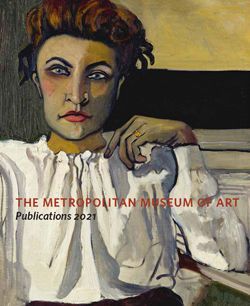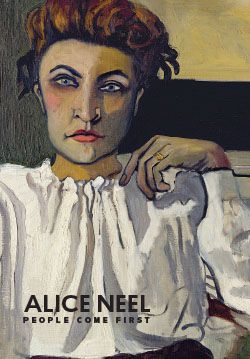Elenka
Alice Neel American
Neel was employed by the Works Progress Administration, a Depression-era relief program for artists under President Franklin Delano Roosevelt’s New Deal, when she rendered this striking image of a young woman. The sitter's penetrating gaze radiates formidable intellect and presence, while the painting’s bold composition, filled with blocks of flat color, reinforces her strength. During the run of The Met’s special exhibition Alice Neel: People Come First, a film historian speculated that the sitter could be the great experimental filmmaker Maya Deren, who, at nineteen and recently married to her first husband, would have recently moved to Greenwich Village and still have been known by her birth name of Eleanora or her nickname, Elinka. While the visual evidence connecting Elenka to Deren is compelling in itself, research concerning her identity is ongoing to confirm it.
Regarded today primarily as a portrait painter, Neel resisted any characterization of her work as portraiture, preferring the description "pictures of people," because she believed her imagery went beyond mere likenesses of her subjects to evoke their character and states of being. The artist focused especially on individuals who had experienced injustice as a result of sexism, racism, and capitalism as well as those who combatted it. Democratic and inclusive, Neel painted people from many different backgrounds and walks of life. New York was Neel’s greatest muse, and the stage for a human drama she began capturing in the 1930s. Neel’s life and art were inflected by the tumultuous events of the twentieth century, including the Great Depression, the rise of Communism, and the feminist and civil rights movements.
Due to rights restrictions, this image cannot be enlarged, viewed at full screen, or downloaded.


